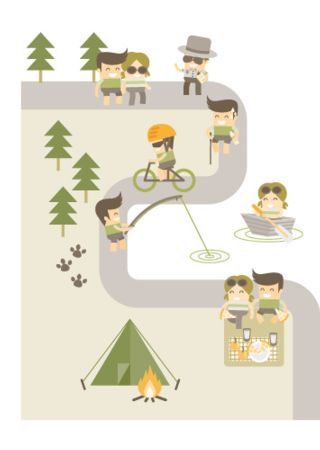| |
| 4 Things to Prepare Your Summer Camp |

Print |
Spring is around the corner and summer will quickly follow. Summer youth camps may not be on your mind, but planning for upcoming camps should be. According to an American Camp Association1 report, there are an estimated 1,500,000 various camp staff positions at over 12,000 day and resident camps. How does your camp prepare for staff and volunteers working with children?

Providing a safe environment is key to running a successful youth camp. From camp credibility in the community to team development to reducing over all risk, protecting campers should be your main mission. Reviewing how you are managing your camp members is key to being successful in that mission. There are four things summer camp facilitators can do to create a safe environment that assists with preventing child sexual abuse and neglect. The following four tips will help you with planning your upcoming summer camp program.
- Screening. Is your camp screening all employees, staff, counselors, volunteers, and participating members? Confidently strengthen your camp team by verifying all participating members. A background screening may include a sex offender search, a criminal history and Department of Motor Vehicle check. These must comply with the Fair Credit Reporting Act and any other privacy protections. Define what your camp would consider a red flag and screen those individuals accordingly.
- Policies. Policies and Codes of Conduct should be reviewed and acknowledged by all camp member participants. Members should understand their responsibilities not only under the law, but also under camp policy. Of course, there are plenty of protocols to include, but each camp should consider what behaviors will and will not be tolerated, to whom red flags should be reported, and eliminating one-on-one time with campers. These policies make a statement that there will be no tolerance of inappropriate behavior and if such behavior is seen it must be reported Make sure these are in a clear language so any members under 18 understand. This may be the first time they may have been exposed to these new responsibilities and sensitive information.
- Training. Some states require training of all camp members. With live and online training available, facilitators can easily manage the training of their staff.. Online training can be done on or off the campsite at the convenience of the participating member. Training can include a range of topics such as warning signs, boundary violations, and reporting. Again, all camp members should be trained that they must report any signs of child sexual abuse or neglect and the procedure to do so at your camp. Not only is this an educational tool, but it also supports the message outlined in your camp’s policies and Code of Conduct.
- Be prepared. Whatever the role in your camp, training staff to be prepared will create a place where children are safe. It is our duty as responsible adults to prevent child sexual abuse and neglect from occurring in the first place. Any report should be taken seriously and require immediate action. Camp administrators should understand who their designated ombudsman is, be clear when it is time to involve parents or the law in a situation, and know the procedure to do so.
The four important steps listed above should be taken to create a safe environment. Administering camp program standards results in your camp’s integrity. It helps your team develop critical thinking and maintain best practices. With 98% of camps taking place in the summer months of June and August2, the time to begin preparing for your summer camp is now.
American Camp Association
1. Facts and Trends 2011: http://www.acacamps.org/press-room/aca-facts-trends
2. Camps Business Operations Report 2015: http://www.acacamps.org/resource-library/research/aca-camp-business-operations-report


